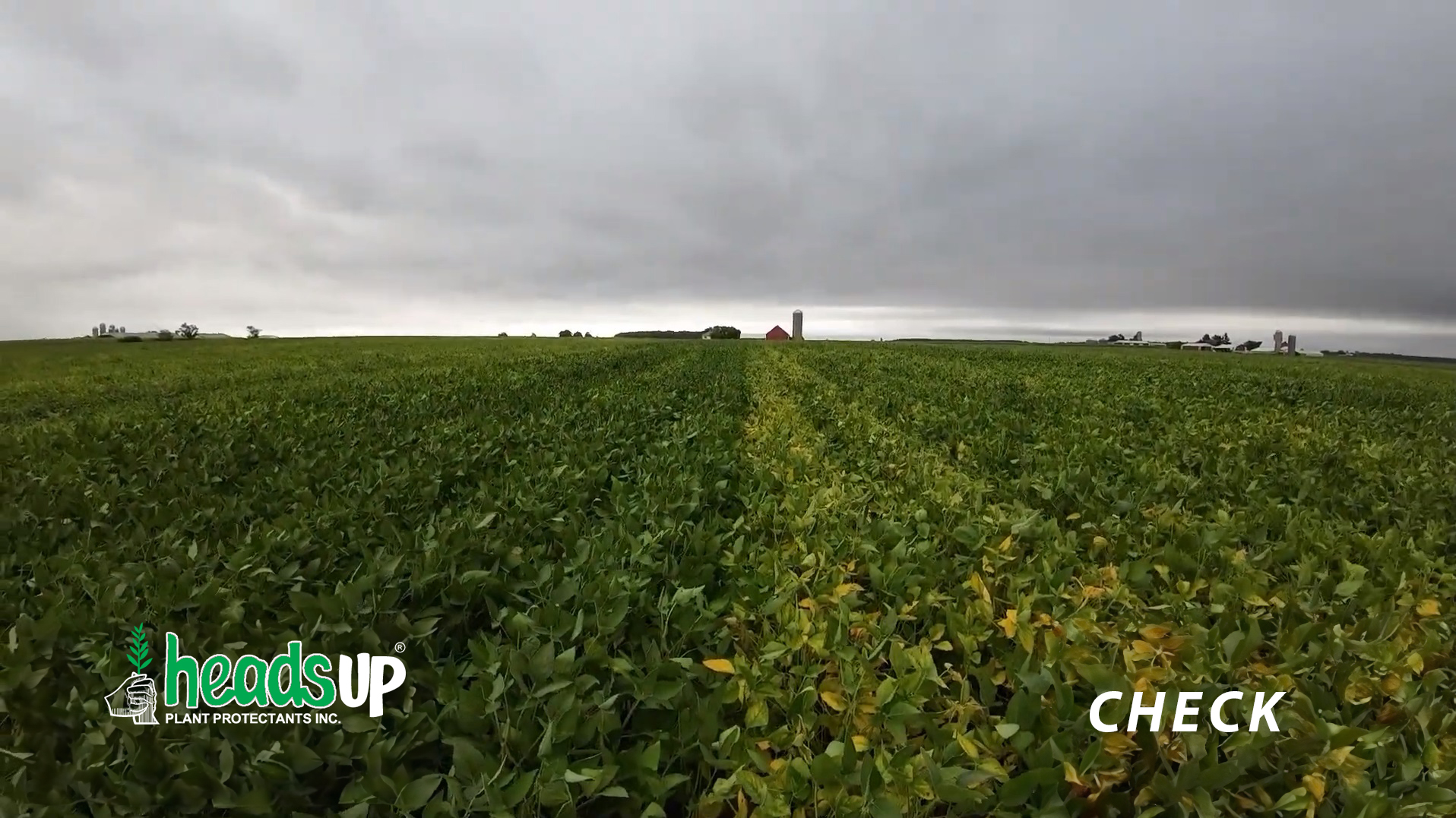Year in and year out, growers in South Dakota battle severe white mold outbreaks in their soybean fields. And on a larger scale, white mold and sudden death syndrome (SDS) affect between 40 to 50 million acres across the north-central region of the United States.
White mold — developed from the fungus Sclerotinia sclerotiorum — is one of the most yield-robbing soybean diseases out there, decimating fields across the upper Midwest. The disease can cut yields by 10% to 20%, and in extreme cases, up to 50% to 70%.
SDS, which is caused by the soil-borne fungal pathogen Fusarium virguliforme, isn’t as common as white mold in the northern plains, but it is starting to develop and take root in soybean fields throughout South Dakota. Connie Strunk, plant pathology field specialist at South Dakota State University Extension, has found that more fields in the state are experiencing problems with SDS. In the affected fields, symptomatic plants are scattered across certain areas, but continued disease development may lead to larger clusters of infected plants.
Tyler Kolb, seed dealer with Next Generation Genetics, sees growers fighting white mold along with Phytophthora and Pythium in the eastern region of the state. SDS affects only a small portion of the area’s soybean fields but Kolb knows they need to be prepared with treatments and management strategies for the future. He recommends a multifaceted approach to managing both white mold and SDS.
Controlling white mold and SDS
Unfortunately, white mold and SDS are two of the most difficult plant diseases to eliminate. But the good news is there are several tools available to combat the diseases to get ahead of outbreaks.
Seed varieties with good disease resistance. In any planting season, selecting the right variety for your growing environment is crucial to achieving top-end yield results. If your area has a history of white mold or SDS, find an option that provides resistance. Most seed companies offer varieties with moderate resistance. Be sure to walk through your options with your seed provider.
Seed treatments. Once your seed variety is selected, applying a seed treatment such as Heads Up® can help keep yield-threatening diseases at bay. Heads Up seed treatment is an environmentally friendly, season-long option that provides extra protection against several crop diseases, including white mold and SDS in soybeans. Its lack of time-to-planting restrictions along with affordability make it easy and effective.
“If you have heavy white mold pressure, it [Heads Up] will not totally cure the problem, but we have seen a large drop in the incidence rate as well as tremendous increases in yield with the product,” Kolb notes. “It also works as preventive maintenance on fields where we haven’t seen heavy pressure yet.”
Fungicides. Applying a fungicide between the R1 and R3 growth stages can provide added protection against diseases as plants undergo critical growing stages.
Wider row spacing. While narrow-row spacing has its advantages, planting soybeans in narrower rows, or anything less than 30-inch rows, can encourage disease growth. Narrow-row soybeans lead to earlier canopy closure, trapping in moisture and cooling soil temperatures, making an environment that’s ideal for diseases like white mold and SDS to thrive in. The more airflow you can get, the better.
Scouting. Knowing what to look for in white mold and SDS infections will help you identify and address the issue early in the season. White mold typically appears in July or early August, between the R3 and R6 growth stages, and has a unique cotton-like appearance. White lesions will appear above or below the nodes.1 Foliar symptoms include discoloration of leaf tissue, starting with a grayish tint and eventually turning brown with severe infection. SDS will cause root rot and produces a plant toxin that moves up from the root tissue into the plant.2 Look for bright yellow spots between the leaf veins that will later spread to form a thin yellow halo, leaving only the veins of the leaves green. SDS-infected stems have tanning or browning, but the pith will remain white.
A good crop rotation plan. Rotating crops helps keep diseases at bay. Experts recommend rotating out of soybeans or other crops that are known to host sclerotia for two years at a time. Longer crop rotations — three or four years — have been proven to help fight SDS.3
Proactive takeaways. Taking note of what you see in your fields is important for future years. Use this information to adapt your crop protection program for your next soybean season.
A cost-effective treatment
If your fields have a history of white mold or SDS, it’s important to start considering seed treatments now, especially when white mold can survive for long periods of time in the soil, sometimes up to seven or 10 years.
Heads Up is the only EPA/PMRA registered seed treatment for suppression of both white mold and SDS in soybeans. For soybean growers, Heads Up offers added protection against infection of Rhizoctonia root rot and damping-off; Sclerotinia, the fungus that triggers white mold; Fusarium, the pathogen that causes SDS; and Pythium-based diseases.
Kolb started treating his soybean seed with Heads Up in 2016. “We are always searching for products that have some effect on white mold and came across research on this product,” says Kolb. “We started using it six years ago and haven’t looked back since.”
He’s seen a definite and consistent response by using Heads Up seed treatment against white mold. “It is an excellent start to the full circle approach of white mold management,” Kolb adds. “It gives noticeable improvement on white mold acres and still shows benefits on fields that do not show disease pressure that given year.”
Not only is Heads Up an effective option for combatting diseases, but it’s also an affordable one. At around $4 per acre (or less), Heads Up seed treatment is often considered a cost-effective add-on or “inexpensive insurance” to protect against yield loss.
“Growers that start using this product become very loyal to it,” says Kolb. “It becomes a management practice that they use every single year.”
As fungal and bacterial diseases become more prevalent in production agriculture, now’s the time to get ahead. Get a head start with Heads Up! To learn more about Heads Up seed treatment, visit About Heads Up or call 1-866-368-9306.
About Next Generation Genetics
Next Generation Genetics is a full-service seed business based in northern South Dakota focusing on corn, soybeans, seed treatments and forages. Established over 25 years ago by Renny Tank, Next Generation Genetics has a passionate team of ag professionals who are dedicated to providing elite service in North and South Dakota. Growers interested in connecting with Next Generation Genetics can visit EnogenSeed.com or call 605-252-0840.
1“Sudden Death Syndrome Starting to Develop in Soybeans,” South Dakota State University Extension.
2“Sudden Death Syndrome (SDS) of Soybeans,” North Dakota State University, August 2021.
3“SDS Meets Its Match in Longer Crop Rotations,” Wallaces Farmer, November 2010.
“White Mold,” Soybean Research Information Network, April 2020.
“Managing white mold in soybean,” Iowa State University Extension and Outreach, July 2014.

